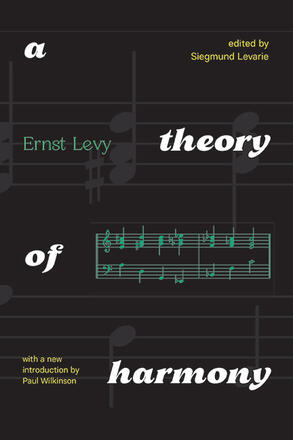
A Theory of Harmony
With A New Introduction by Paul Wilkinson
Alternative formats available from:
The classic work on Levy’s theory of negative harmony.
Description
Ernst Levy was a visionary Swiss pianist, composer, and teacher who developed an approach to music theory that has come to be known as "negative harmony." Levy's theories have had a wide influence, from young British performer/composer Jacob Collier to jazz musicians like Steve Coleman. His posthumous text, A Theory of Harmony, summarizes his innovative ideas. A Theory of Harmony is a highly original explanation of the harmonic language of the modern era, illuminating the approaches of diverse styles of music. By breaking through age-old conceptions, Levy was able to reorient the way we experience musical harmony.
British composer/music pedagogue Paul Wilkinson has written a new introduction that offers multiple points of entry to Levy’s work to make this text more accessible for a new generation of students, performers, and theorists. He relates Levy's work to innovations in improvisation, jazz, twentieth-century classical music, and the theoretical writings of a wide range of musical mavericks, including Harry Partch, Hugo Riemann, and David Lewin. Wilkinson shows how A Theory of Harmony continues to inspire original musical expression across multiple musical genres.
Ernst Levy (1895–1981) was a Swiss music theorist, composer, and conductor.
Reviews
"Ernest Levy's idea [was that] any chord in any key, has a reflection, a polar opposite … based on rotating every single note around the axis of the key center." — Jacob Collier
"The extreme symmetry that Levy is dealing with … reminds me of some of the work I’ve done as well as elements of Bartók's work, Henry Threadgill's work, W.A. Mathieu, Howard Boatwright, Schwaller de Lubicz, and ancient Egypt, Pythagoras, Plato, and the work of the ancient Greeks, Babylonian ideas of reciprocity and the work of Umayalpuram Sivaraman and other related Vedic symmetrical ideas." — Steve Coleman